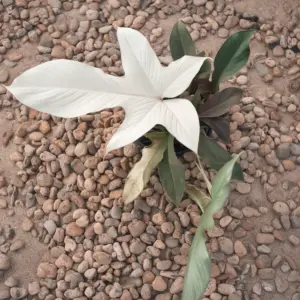Biological Features of Philodendron Micans
Philodendron Micans showcases a unique combination of characteristics. This plant is a vining perennial, featuring heart-shaped leaves. The leaves possess a stunning dark green hue with a slight velvety texture. As it matures, the foliage may exhibit stunning reddish undertones. Consequently, this plant grows as a climber, thriving best when it has support.
Typically, Philodendron Micans can reach a height of up to 3 feet. Its growth can be encouraged by regular pruning. Moreover, it prefers warm and humid environments, making it suitable for indoor settings.
| Feature | Description |
|---|---|
| Leaf Shape | Heart-shaped and slightly velvety |
| Leaf Color | Dark green with reddish undertones |
| Growth Habit | Vining and climbing |
| Height | Up to 3 feet |
| Environment | Prefers warm, humid conditions |
To ensure healthy growth, it’s vital to provide adequate light and humidity. Furthermore, water the plant when the top inch of soil feels dry. Fertilizing during the growing season helps maintain nutrient levels. With proper care, Philodendron Micans is a resilient and attractive choice for plant enthusiasts.
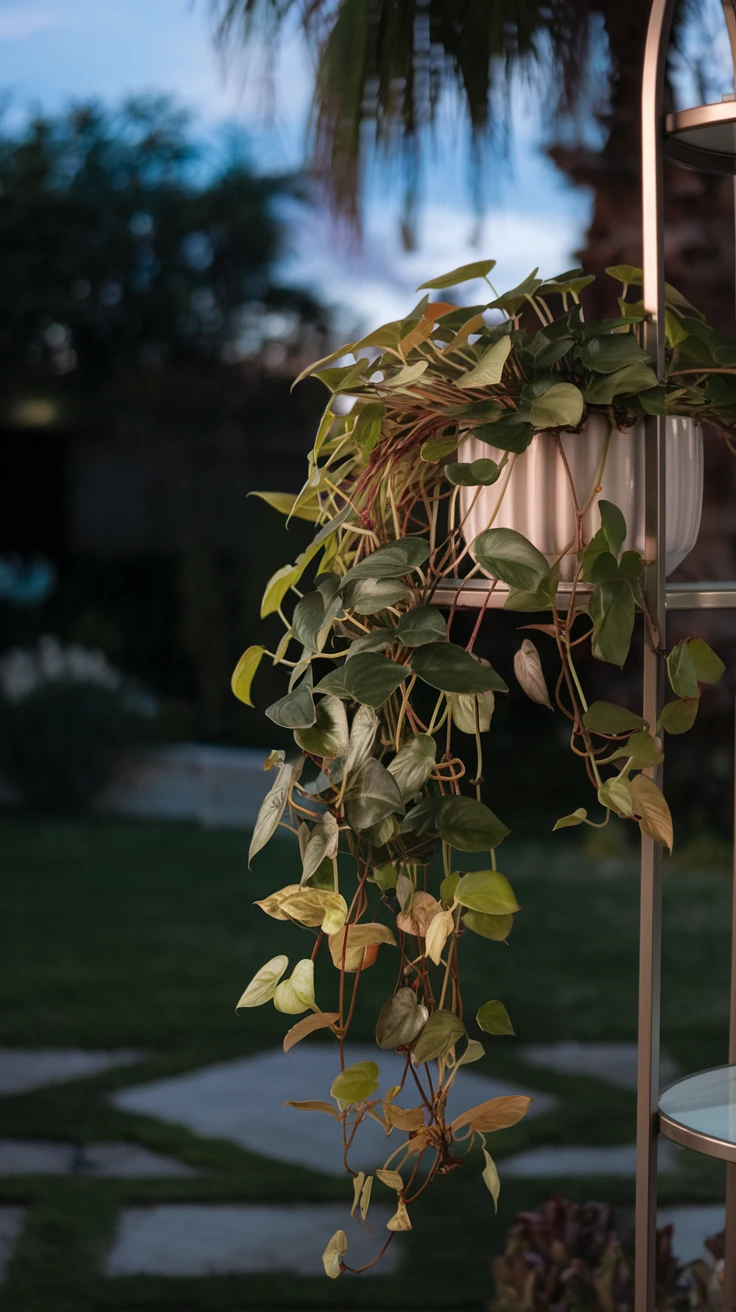
History and Cultural Significance
Philodendron Micans is treasured for its uniqueness and beauty. This tropical plant has deep roots in the Americas, particularly in rainforests. Historically, it served various purposes for indigenous cultures. Many used the leaves for decoration and traditional rituals.
In addition to its aesthetic appeal, Philodendron Micans holds cultural significance. It symbolizes growth and vitality, reflecting the lush environments where it thrives. Moreover, its easy care makes it popular among plant enthusiasts and collectors.
- Philodendron Micans is known for its heart-shaped leaves.
- It often exhibits a stunning iridescence, especially under sunlight.
- The plant represents abundance in many cultures.
- It promotes good luck and prosperity, according to some beliefs.
- This plant is commonly seen in homes and offices due to its air-purifying qualities.
Through the years, Philodendron Micans has adapted to various environments. As a result, it remains a favorite among indoor plant lovers. Its ability to thrive in low-light conditions only adds to its appeal. Furthermore, this resilient plant embodies the rich biodiversity of tropical regions.
Caring for Philodendron Micans involves understanding its natural habitat. Providing adequate humidity and warmth enhances growth and vibrancy. Regularly misting the leaves or placing it near water sources works well. Additionally, periodic pruning encourages bushier growth and prevents leggy appearances.
Overall, Philodendron Micans has a rich history intertwined with culture and nature. Its presence in homes symbolizes connection to the natural world. As it continues to be cherished, its legacy will endure for generations to come.
Ideal Growing Conditions for Philodendron Micans
Philodendron Micans thrives in conditions that replicate its natural habitat. This plant prefers a warm and humid environment. Aim for temperatures between 65°F and 80°F (18°C to 27°C) for optimal growth. Humidity levels should be fairly high, ideally around 60% or more. To increase humidity, consider using a humidifier, grouping plants, or placing water trays nearby.
Light is another crucial factor. Philodendron Micans grows best in bright, indirect sunlight. While it can tolerate low-light conditions, its growth may slow down, and its vibrant colors may fade. Avoid placing it in direct sunlight, which can scorch the leaves.
When it comes to soil, using a well-draining potting mix is essential. A blend that retains some moisture while allowing excess water to escape is ideal. A mix of peat moss, perlite, and orchid bark works well.
Watering should be done carefully. Allow the top inch of soil to dry out before watering again. Overwatering can lead to root rot, so always check the soil moisture level. You can use your finger to gauge when it’s time to water.
Nutrients play a significant role in the health of Philodendron Micans. Fertilize your plant every 4-6 weeks during the growing season. A balanced liquid fertilizer works effectively. Make sure to dilute it to half strength to avoid burning the roots.
| Factor | Ideal Conditions |
|---|---|
| Temperature | 65°F to 80°F (18°C to 27°C) |
| Humidity | 60% or higher |
| Light | Bright, indirect sunlight |
| Soil | Well-draining potting mix |
| Watering | Allow top inch to dry before watering |
| Fertilization | Every 4-6 weeks during growing season |
In summary, providing the right growing conditions can lead to a thriving Philodendron Micans. Focus on achieving the ideal temperature, humidity, light, soil, watering, and fertilization. With these factors in check, your plant will flourish beautifully.

Philodendron Micans Care and Maintenance
The Philodendron Micans requires specific care for optimal growth. First and foremost, ensure you provide the right environment. It thrives best in temperatures between 65°F and 80°F. Additionally, maintain humidity levels around 50% or higher, as this tropical plant flourishes in such conditions. Furthermore, place it in bright, indirect light to support healthy growth. However, avoid direct sunlight, as it can scorch the leaves and cause damage.
Watering and Soil Requirements
Next, water your Philodendron Micans only when the top inch of soil feels dry to the touch. Be cautious, as overwatering can lead to root rot. Conversely, underwatering can cause the leaves to droop, signaling dehydration. Therefore, always use a well-draining potting mix to ensure appropriate moisture levels are maintained.
Fertilizing and Repotting
During the growing season, typically spring and summer, feed your plant with a balanced liquid fertilizer every four to six weeks. You may reduce feeding in the fall and winter months when the plant’s growth naturally slows down. Additionally, consider repotting your Philodendron Micans every couple of years to refresh the soil, which promotes healthy growth and nutrient absorption.
Furthermore, you’ll want to regularly check for pests. Aphids and spider mites can be common issues for this plant. To manage pests effectively, wipe the leaves with a damp cloth or use insecticidal soap as needed. Regularly cleaning the leaves not only keeps pests at bay but also maintains healthy foliage, which aids in photosynthesis.
- Light: Bright, indirect sunlight is ideal for growth and prevents leaf damage.
- Water: Only water when the top inch of the soil is dry to avoid overwatering.
- Soil: A well-draining potting mix is essential to maintain proper moisture balance.
- Temperature: Maintain temperatures between 65°F and 80°F for best results.
- Humidity: Higher humidity levels are beneficial and promote lush growth.
In addition, pruning is also crucial for maintaining the plant’s shape. Use clean, sharp scissors to trim any overly long vines. Not only does this practice encourage fuller growth, but it also enhances the plant’s overall appearance.
Lastly, consider propagating your Philodendron Micans to enjoy even more of this beautiful plant. You can do this through stem cuttings. Make sure each cutting has at least one node, as this will help with root development. Place the cuttings in water or a suitable potting mix, and roots should begin to develop within a few weeks, adding even more greenery to your space.
Propagation Techniques for Philodendron Micans
Philodendron Micans is a popular houseplant, especially appreciated for its lush, heart-shaped leaves. Notably, propagating this stunning plant is quite straightforward. To start, you can use cuttings taken from a healthy mother plant. Importantly, each cutting should have at least one node. This is because nodes are essential, as they contain the tissue that will eventually sprout roots.
Preparing the Cuttings
In order to begin the propagation, follow these steps carefully. First, choose a healthy stem and make a clean cut just below a node. Next, place the cutting in water or soil, depending on your preference. If you decide to use water, ensure the node is submerged. However, keep the leaves above the waterline to prevent rotting. By using this method, you can expect roots to develop in just a few weeks.
Soil Propagation Method
If you prefer soil propagation instead, immerse the cutting in a moist potting mix. It’s important to keep the soil consistently damp, but not overly wet, to prevent rot. Additionally, covering the pot with a plastic bag helps retain humidity, which promotes a warmer environment conducive to root growth.
Using Rooting Hormone
Furthermore, using rooting hormone can significantly enhance the chances of successful propagation. Simply dip the end of the cutting gently in the hormone before placing it in water or soil. This step can noticeably boost root development.
Optimal Growing Conditions
Moreover, maintaining a warm temperature is essential for optimal growth. Placing the cuttings in bright, indirect light supports healthy development without risking leaf scorching. Regularly check the moisture levels and promptly remove any dead leaves to prevent fungal diseases from spreading.
Transplanting and Final Care
After a few weeks, you should notice new growth emerging, which signals that your Philodendron Micans cutting has successfully rooted. Once the roots are about 2-3 inches long, you can carefully transplant them into a larger pot. Be sure to use a well-draining potting mix at this stage. With the right care and attention, your new plants will thrive, continuing to enhance your indoor space beautifully.
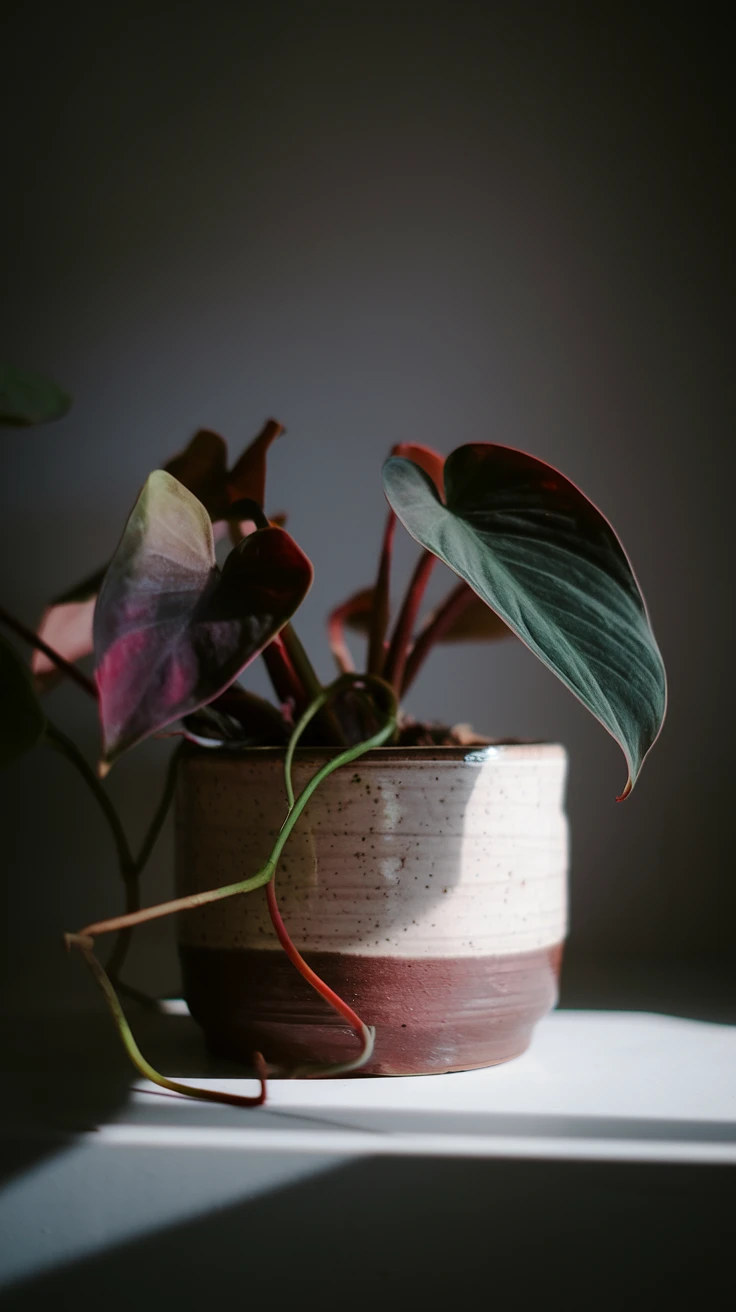
Common Problems and Solutions
Addressing Common Issues
Philodendron Micans, like many houseplants, can face various challenges. By understanding these problems and their solutions, you can ensure healthy growth. Below are some common issues you might encounter and how to address them effectively.
- Leaf Yellowing: This issue often indicates overwatering. In this case, adjust your watering schedule accordingly.
- Pests: Common pests, including spider mites and mealybugs, can occasionally affect your plant. Regularly inspect it for signs of infestations.
- Wilting Leaves: Wilting may be a sign of underwatering or low humidity. Make sure to maintain adequate moisture levels.
- Stunted Growth: If your Philodendron Micans isn’t thriving, check the light conditions. It usually prefers bright, indirect light.
- Leaf Drop: Sudden leaf drop may result from temperature changes. Keeping a stable environment can help prevent this issue.
Diagnostic Table for Philodendron Micans
To further assist in diagnosing and treating issues, refer to the table below:
| Issue | Signs | Solution |
|---|---|---|
| Leaf Yellowing | Yellow leaves, mushy soil | Reduce watering, allow soil to dry |
| Pests | Webbing, small white spots | Use insecticidal soap, neem oil |
| Wilting | Droopy leaves | Increase watering, boost humidity |
| Stunted Growth | Slow or no new growth | Improve light conditions |
| Leaf Drop | Leaves falling off | Stabilize temperature |
By recognizing these common problems early, you can take action to restore your Philodendron Micans to good health. Regular monitoring will help you maintain its vibrant beauty.
Seasonal Care Adjustments
Philodendron Micans requires specific care adjustments throughout the seasons to thrive. During spring, increase watering as the plant actively grows. This will help maintain its vibrant colors and lush foliage. Additionally, apply a balanced fertilizer every four to six weeks to support growth.
As summer approaches, ensure your Philodendron Micans gets ample indirect sunlight. However, avoid direct sun exposure, as it can scorch the leaves. Keep the humidity levels high by misting the plant regularly or using a pebble tray.
In fall, gradually reduce watering as the growth slows down. Assess the humidity levels and continue to provide moisture, but be cautious of overwatering. Watch for signs of pests, such as spider mites, which may thrive in drier conditions.
During winter, reduce fertilization, as the plant becomes dormant. Lower the temperature slightly to mimic its natural environment. While watering, ensure the topsoil dries out before the next watering cycle.
- Spring: Increase watering and fertilization.
- Summer: Provide indirect sunlight and high humidity.
- Fall: Reduce watering and check for pests.
- Winter: Lower fertilization and adjust temperature.
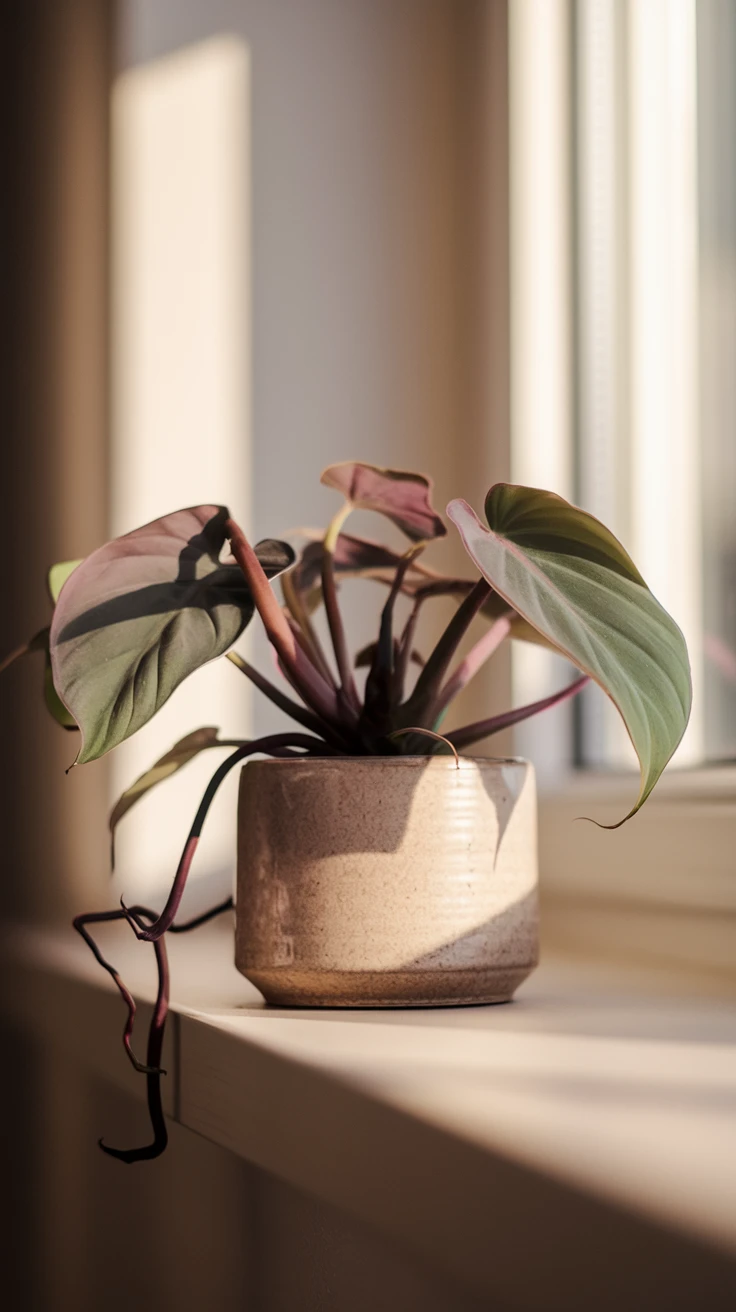
Microclimate Setup Tips
Creating the perfect microclimate for your Philodendron Micans is essential to its growth. This plant thrives in specific conditions. Therefore, let’s explore some important tips to ensure its success.
- Light: Philodendron Micans prefers bright, indirect light. Too much direct sunlight can scorch its leaves.
- Humidity: Aim for humidity levels between 50% and 70%. Consider using a humidifier or misting the leaves regularly.
- Temperature: Maintain a temperature range of 65°F to 80°F (18°C to 27°C). Avoid sudden temperature drops.
- Watering: Water when the top inch of soil feels dry. Overwatering can lead to root rot, so be cautious.
- Soil: Use a well-draining potting mix. A mix that includes perlite or orchid bark works best.
- Fertilization: Feed every month during the growing season with a balanced fertilizer. Reduce feeding in winter.
Moreover, avoiding drafts and extreme temperature changes can significantly enhance your plant’s health. Be attentive to its needs, as Philodendron Micans is sensitive to environmental changes. Finally, regularly check for pests like spider mites or aphids, as early intervention can prevent larger issues. Following these tips helps create a thriving environment for your beloved Philodendron Micans.
Frequently Asked Questions
Philodendron Micans is a popular houseplant known for its stunning foliage. Many plant enthusiasts have questions about its care and maintenance. Here are some common queries:
1. How often should I water my Philodendron Micans? Generally, this plant prefers to dry out slightly between waterings. Water it when the top inch of soil feels dry. This usually translates to watering every 1-2 weeks, depending on humidity and light conditions.
2. What light conditions are best for Philodendron Micans? It thrives in medium to bright indirect light. However, low light conditions can also work, though growth may slow down. Avoid direct sunlight, as it can scorch the leaves.
3. Does Philodendron Micans need high humidity? While it appreciates higher humidity levels, typical home environments usually suffice. To boost humidity, consider misting the leaves or placing a humidity tray nearby.
4. How do I propagate Philodendron Micans? This plant propagates easily through stem cuttings. Simply cut a healthy stem, ensuring it has a few nodes, and place it in water or moist soil.
5. Are there any common pests? Watch out for common pests like spider mites or mealybugs. Regularly inspect your plant, and treat any infestations promptly.
By addressing these frequently asked questions, you can ensure your Philodendron Micans thrives in your home.
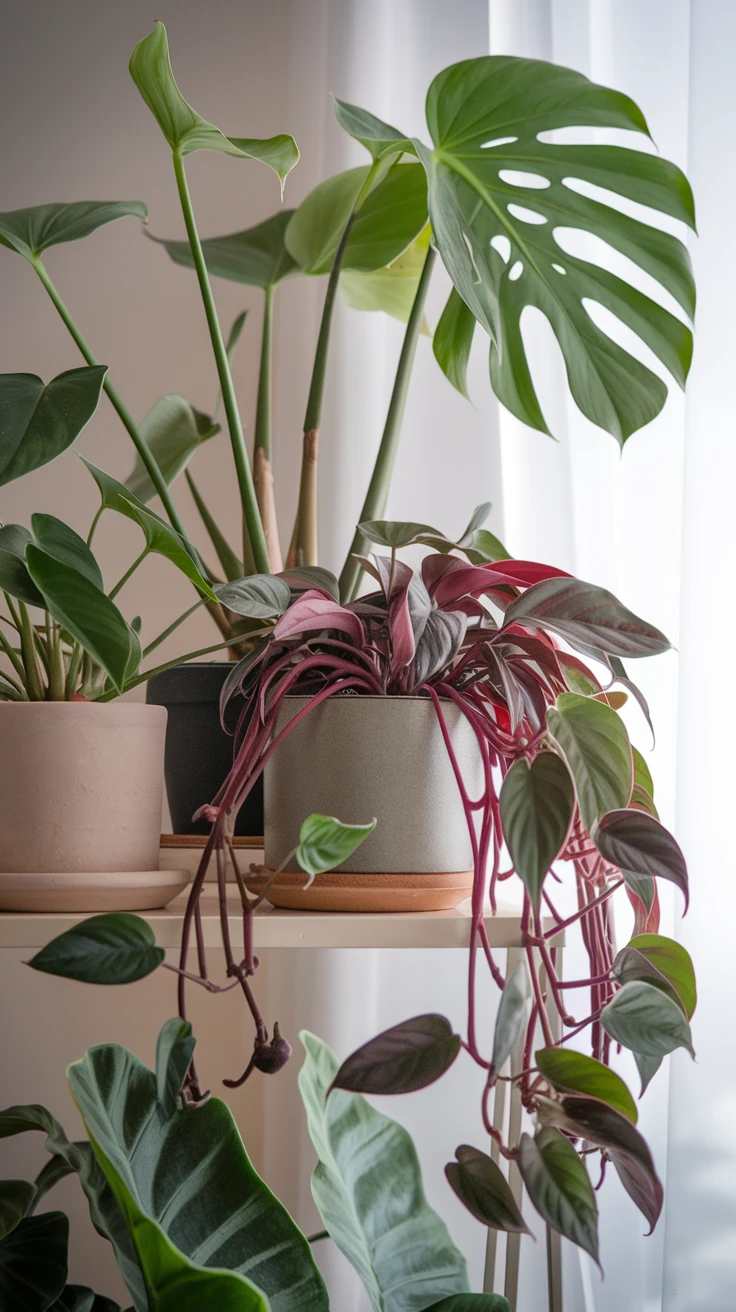
Summary and Recommendations
Philodendron Micans is a beautiful, trailing plant known for its stunning heart-shaped leaves. It features a unique velvety texture that adds depth to any indoor space. This plant thrives in moderate to bright indirect light, making it ideal for various environments. To keep your Philodendron Micans healthy, ensure it is placed in well-draining soil.
Watering should be done when the top inch of soil feels dry. Additionally, maintaining humidity levels above 50% will enhance its growth. Furthermore, consider fertilizing every 4-6 weeks during the growing season for optimal results.
For propagation, stem cuttings in water or soil work effectively. Use a clean, sharp knife to take cuttings, and always let them air dry before planting. Overall, Philodendron Micans is a worthy addition to your plant collection.
In summary, this plant is not only aesthetically pleasing but also relatively low-maintenance. Remember to monitor its light and water needs closely to ensure a thriving environment.






